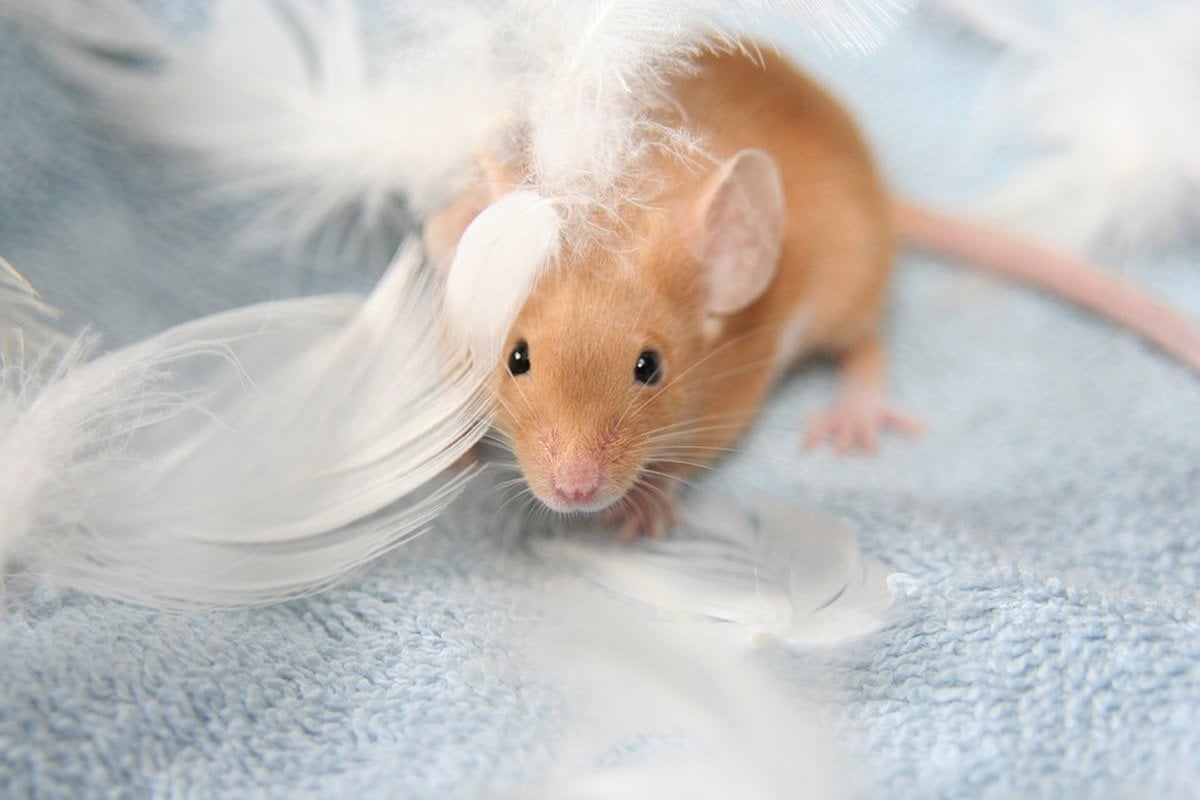Summary: The sense of smell has been restored to mice suffering olfactory problems with the aid of stem cell therapies. The findings provide the basis for transitional research to see whether intranasal stem cell treatments can be beneficial for those who have lost their sense of smell.
Source: Cell Press
A stem cell therapy delivered into the nose can restore the sense of smell in a mouse model of olfactory loss. The findings, published May 30 in the journal Stem Cell Reports, provide proof of principle for an approach that has the potential to be of broad utility for a range of clinical conditions causing loss of olfaction.
“This is the first model of smell loss showing evidence of recovery using a cell-based therapy,” says senior study author Bradley Goldstein of the University of Miami Miller School of Medicine. “It is very important to understand that many questions would need to be worked out before considering this in a human patient. However, it does provide evidence that such an approach warrants further study.”
Olfaction is impaired in 12% of the US population due to causes such as age-related decline, post-viral damage, head trauma, or genetic disorders affecting olfactory neuron function. Impairments in the sense of smell are often permanent and lack treatment options. Recent studies in mice have shown the potential of viral gene therapy to restore olfactory function. But viral gene therapies are usually tailored only to specific conditions. By contrast, cellular replacement therapy holds promise for recovering olfactory function that is impaired due to a wide range of causes.
“There is some evidence that a failure to normally replace damaged or lost olfactory neurons may contribute to many forms of acquired olfactory loss,” Goldstein says. “So, we were interested in testing the idea that a cell-based therapy approach, to replace neurons, might be plausible.”
To test this idea, Goldstein and his team developed a genetic mouse model that cannot detect odors due to non-functional olfactory sensory neurons. Specifically, deletion of the Ift88 gene caused these cells to lack cilia – hair-like structures that are required for sensing odors. The researchers then delivered into the nose droplets containing globose basal cells–the principal pool of replicating stem cells that replenish aging or damaged olfactory sensory neurons throughout life.
The adult stem cells engrafted to produce mature, functional olfactory sensory neurons in the olfactory epithelium–tissue inside the nasal cavity. The engraftment-derived olfactory sensory neurons sent projections, or axons, to a brain structure called the olfactory bulb, effectively restoring the sense of smell. In a behavioral test, Ift88-deficient mice that received the stem cell therapy responded normally to an aversive odor, while Ift88-deficient mice that didn’t receive the stem cell therapy did not. Moreover, there was no evidence of tumor growth within the timeframe of the study, supporting the potential safety of this treatment.

“We were a bit surprised to find that cells could engraft fairly robustly with a simple nose drop delivery,” Goldstein says. “To be potentially useful in humans, the main hurdle would be to identify a source of cells capable of engrafting, differentiating into olfactory neurons, and properly connecting to the olfactory bulbs of the brain. Further, one would need to define what clinical situations might be appropriate, rather than the animal model of acute olfactory injury.”
In future studies, Goldstein and his team plan to define more precisely the specific problems causing common acquired human olfactory disorders. “With that information, we could then consider more appropriately whether a possible cell-based treatment, viral gene therapy, or other pharmacologic targets might be logical strategies for treatment,” Goldstein says. “Regardless, continuing to study the mechanisms in human cells that are required for production of functional olfactory neurons from progenitor cells will be broadly important for moving forward.”
Funding: This work was funded by the National Institutes of Health and the American College of Surgeons/Triological Society. One of the co-authors discloses a financial interest with Longeveron.
Source:
Cell Press
Media Contacts:
Carly Britton – Cell Press
Image Source:
The image is in the public domain.
Original Research: Open access
“Cell-Based Therapy Restores Olfactory Function in an Inducible Model of Hyposmia”. Kurtenbach et al.
Stem Cell Reports. doi:10.1016/j.stemcr.2019.05.001
Abstract
Cell-Based Therapy Restores Olfactory Function in an Inducible Model of Hyposmia
Highlights
• A novel mouse model of inducible olfactory loss was used to test stem cell therapy
• Purified adult tissue-specific stem cells can engraft and restore olfaction
• Culture expansion of engraftment-competent stem cells was examined via RNA-seq
Summary
Stem cell-based therapies have been proposed as a strategy to replace damaged tissues, especially in the nervous system. A primary sensory modality, olfaction, is impaired in 12% of the US population, but lacks treatment options. We report here the development of a novel mouse model of inducible hyposmia and demonstrate that purified tissue-specific stem cells delivered intranasally engraft to produce olfactory neurons, achieving recovery of function. Adult mice were rendered hyposmic by conditional deletion of the ciliopathy-related IFT88 gene in the olfactory sensory neuron lineage and following experimentally induced olfactory injury, received either vehicle or stem cell infusion intranasally. Engraftment-derived olfactory neurons were identified histologically, and functional improvements were measured via electrophysiology and behavioral assay. We further explored mechanisms in culture that promote expansion of engraftment-competent adult olfactory basal progenitor cells. These findings provide a basis for translational research on propagating adult tissue-specific sensory progenitor cells and testing their therapeutic potential.






